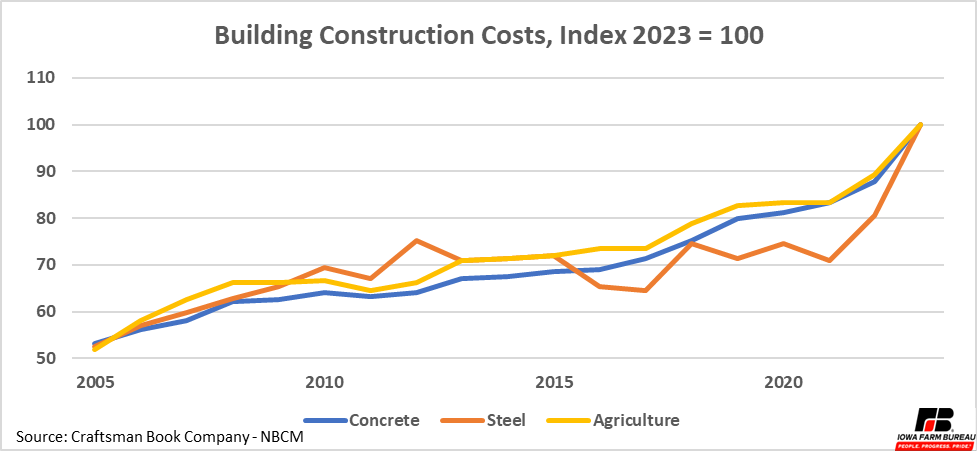Material Prices Ease Despite Higher Construction Cost Forecast
Author
Published
5/1/2023
Construction Material Costs Lower After Two High Years
Following the pandemic, the price of construction materials increased dramatically. Figure 1 shows the Producer Price Indexes of lumber, concrete, and steel indexed so March 2023 prices are equal to 100.
Lumber prices were the first to increase, with its index value jumping from around 80 to 120 in a little over a year. Steel soon followed with an even larger increase. Steel’s index value increased from around 60 to over 120 in about a year as well. Both indexes remained high in 2021 but trended lower during the second half of 2022.
Cement prices did not increase quickly following the pandemic. However, since the beginning of 2021, cement prices have consistently trended up, and have increased at a faster rate than they have in the past. Cement prices have not seen notable price decreases like lumber and steel.

Figure 1. PPI of Select Construction Materials, Index March 2023 = 100
The combination of reduced supply and strong demand contributed to the large increases of lumber and steel over the past two years. Large government stimulus packages kept consumer spending higher in most areas despite the pandemic lockdown. Total construction spending only saw a slight dip following the pandemic, before continuing to increase again (Figure 2). Furthermore, supply chain challenges reduced supply and increased costs. Together these factors drove prices higher following the pandemic. Supply chain challenges for the most part have bene resolved, and this is evident in lumber and steel, both of which have trended down from highs in 2021 and the first half of 2022.

Figure 2. Total US Construction Spending (Billion Dollars)
Despite lumber and steel prices coming down, construction costs are still expected to be up this year. The Craftsman Book Company annually publishes the National Building Costs Manuel (NBCM) that forecasts construction costs for the upcoming year. Figure 3 shows the historic construction costs of concrete, steel, and agricultural buildings data indexed so the 2023 forecast is equal to 100. These costs include labor, equipment, plans, building permits, supervision, overhead, and company profits. Costs do not include land or land preparation.

Figure 3. Agricultural Building Construction Costs, Index 100 = 2023
Since the pandemic, construction costs reported by the survey have had a notable jump. Table 1 shows the average annual increase in construction costs for each building type from 2005-21, as well as the price increases from 2021-22 and 2022-23. Increases from 2021-2022 were noticeably higher than the average of previous increases and the forecast increases this year are higher yet.
Table 1. Construction Costs Price Increases
There are a few reasons why construction costs are forecast to increase this year despite notable decreases in the prices of lumber and steel.
First, it is important to remember PPI prices, measure changes in the wholesale prices producers of a certain product receive for that product. These price changes typically become less evident the further down the supply chain you go as the product is typically combined with other products that can have different price movements. In this case, even though lumber and steel are decreasing, increases in cost of labor, equipment, and other construction costs could offset these price decreases and increase overall construction prices.
Another possibility is the timing of the estimates. The NBCM was published in the fall of the preceding year. The 2023 estimates were published in September of 2022. The consistent downtrend in steel and lumber prices that has occurred may not have been expected or included in the NBCM forecasts. Therefore, those costs would not reflect current prices.
Whatever the reason, construction materials costs are expected to be lower than they have been for the past two years. Other construction costs do look to have support for higher prices moving forward. Low unemployment is keeping labor costs higher, and increased interest rates and high inflation make general costs higher for all businesses. Still, with construction materials coming down as much as they have, construction may be an attractive investment this year or next year. If you are considering building and have the ability to finance a potential project, it may be worth getting a quote.
Want more news on this topic? Farm Bureau members may subscribe for a free email news service, featuring the farm and rural topics that interest them most!